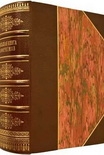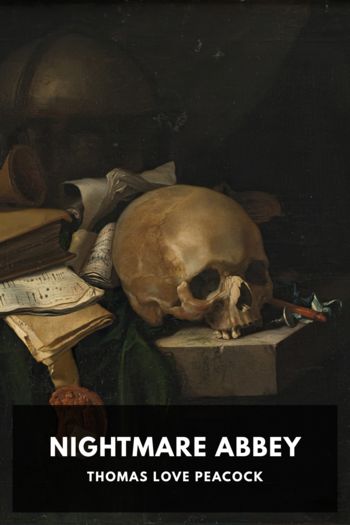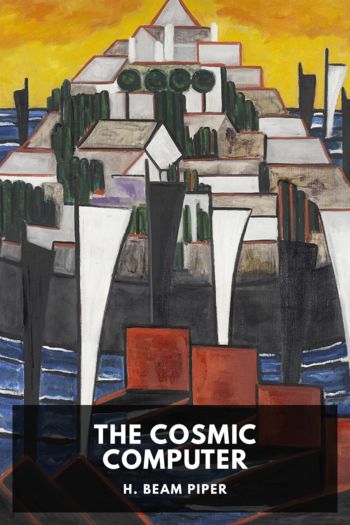Gluck, Diana Souhami [good novels to read in english txt] 📗

- Author: Diana Souhami
Book online «Gluck, Diana Souhami [good novels to read in english txt] 📗». Author Diana Souhami
In such an atmosphere Gluck cemented her relationship with Edith. It had more to do with striking an attitude than real compatibility. Gluck wanted a home and Edith was determined to provide her with one. They had good times – they went to the Theatre Royal at Brighton and saw Lady Windermere’s Fan, Murder in the Cathedral and Valerie Taylor in Anonymous Lives. They went to Glyndebourne for Benjamin Britten’s new opera Albert Herring and to London – occasionally – to visit the art galleries. Gluck kept on with her work for the Sussex Council of Churches and both she and Edith took tea with the Bishop at Chichester Palace. They visited the Bougheys, the Greenes and the Dulacs. Susan Ertz and her husband Ronald McCrindle came to stay and Gluck spent the occasional weekend with Molly Mount Temple. On Gluck’s birthday, on 13 August, Edith brought her red roses and nectarines with dew on them on her breakfast tray. ‘Darling Grub’, she wrote when Gluck went into Hove nursing home in July 1947 for an operation on a tooth abscess ‘… I played our record at the time I thought you were under in case you were disembodied enough to drift this way … I will come at 3.30, Love E.’
Gluck was taking a completely different focus on her professional life. She seldom visited the Bolton House studio and made no contact with The Fine Art Society. She was not working toward an exhibition or in any thematic way and had left the buzz and pressure of London life behind. The tensions and dramas of the Chantry House obsessed her now. Nora and Gluck were scarcely speaking and there was deep bitterness between the sisters. ‘Nora makes terrible scene with E. before supper. I hear it but stay upstairs. Nora insulting to E. about her job.’ ‘E. working hard. Nora goes in and makes scene on her at 11.30 when she’s working. E. tells her to go away.’
In October 1947 Gluck sold the Letter Studio in Lamorna after some pressure from her trustees about her continuing to hold properties she seldom used. The loss made her extremely miserable. All that she once had was slipping away. Nesta, free as a bird, sent letters from Italy, Zurich, Lenzerheide, Mexico, New York, until Seymour had a minor stroke in November. Then she came back to Plumpton for a while. It would have confirmed her worst fears had she seen Gluck in this hothouse of emotional discord. Nora accused Gluck of spying and called her and Edith ‘disgusting people’. Gluck thought Nora ‘treacherous’ and ‘crazy’. Nora, in her sixties, was scared of losing her home – a home that she had done so much to create, and Gluck, in her fifties, was scared of not finding a home and facing loneliness. And perhaps, more ominously, there were old scores to settle for the pain and loss that triangular relationships had caused her.
There were no oysters, champagne, or dancing on New Year’s Eve, 1947. Edith cooked a goose because the kitchen staff were away. Early the next year the division of the linen, furniture, glass, carpets, pictures and records took place. The Trust paid for half of the value of Chantry House on Gluck’s behalf and Nora, with that money, moved out to another house in Steyning, at Wyckham Close, on 14 February 1948. She was sixty-five. Though in the years that followed some reparation took place between the sisters, Nora never visited Chantry again.
FIFTEEN
YEATS’S BONES
With Nora ousted from Chantry, Gluck had a responsibility to make the menage à, deux work. The demands of the house soon dictated the structure of her life. It became in one way the settled home she had always wanted and in another a curtailment to her talent. A housekeeper, Mrs Gurd, joined them in 1949 and stayed with them, like the gardener Mr Lovett, until they died. Robert Lovett, a former postman, first went to the Chantry in the early fifties and did not mind stretching Gluck’s canvases and listening to her woes as well as pruning the trees. Whereas to Nesta Gluck had been the ‘darling boyee’ now she began for all the world to seem like a patriarchal father – the father Edith never mentioned. She was protective of Edith but dominated her totally. It was Gluck who sat at the head of table in a dinner suit, carved the roast, pulled the wine corks, checked the household accounts, hired and fired the kitchen staff and monopolized the conversation at mealtimes. Everything was spotless, ordered, formal but the atmosphere of the house changed.
Burying herself at Steyning did not help Gluck’s career. It was a small market town, rather well-furnished with nursing homes. With the sale of Bolton House her links with London became tenuous. She seldom if ever used her Hampstead studio, and eventually sold that too in 1949. To compensate, in 1953 she bought the ‘Dolphin Cottage’ in St Buryan, Cornwall. Mr Dawbarn of The Fine Art Society, who so liked her work and encouraged her in the thirties, retired after the war. For the next thirty-five years Gluck had little or no contact with the Gallery and she and her work were all but forgotten by them. And the trend in postwar art was toward abstraction, which she regarded as a passing fad. She believed in the universality of classicism – that it revealed nature and human character ‘in all their depth and nakedness, freed from





Comments (0)